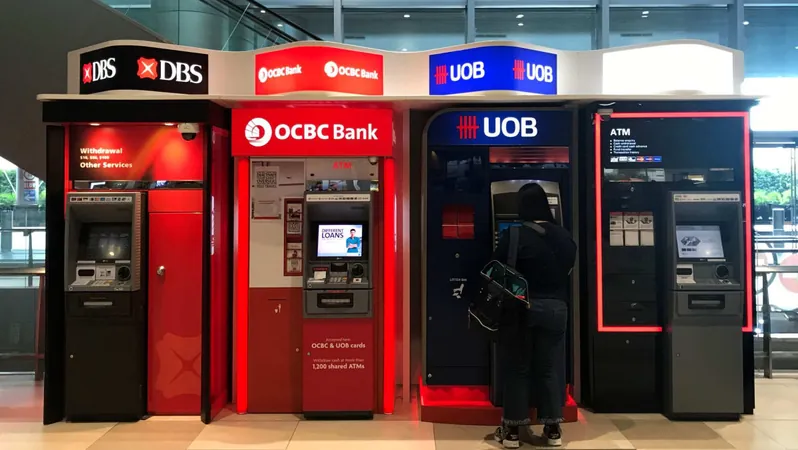
Striking the Balance: Will S$50,000 Threshold for Fraud Alerts Protect Consumers or Cause Inconvenience?
2024-11-12
Author: Li
Introduction
In a recent parliamentary discussion, Singapore’s Minister of State for Trade and Industry, Alvin Tan, highlighted the complexities surrounding the nation’s new fraud surveillance framework. Set to launch on December 16, this framework is designed to mitigate financial losses from phishing scams, but it brings with it potential challenges for both banks and consumers.
The S$50,000 Threshold
The framework proposes that banks should block or investigate transactions exceeding S$50,000, with Tan cautioning that lowering this threshold may lead to an overwhelming number of false fraud alerts, resulting in significant inconvenience for most customers. This critical balance between protecting consumers and allowing legitimate financial activity is at the heart of the ongoing debate.
Shared Responsibility Model
Under the shared responsibility model, financial institutions, telecommunication companies, and consumers will share the burden of losses stemming from these scams. If a customer's account balance is swiftly diminished—defined as over half being drained within 24 hours—banks are mandated to either halt the transaction until verification occurs or notify the customer while putting the transaction on hold for at least a day.
Considerations for Lower-Income Customers
Tan explained that the S$50,000 benchmark was established after careful consideration, tailored to ensure that the majority of customers could continue their transactions without unnecessary interruption. However, the Minister recognized that individuals from lower-income backgrounds might find this threshold to be excessively high, prompting concerns about whether adjustments could be made to accommodate these customers.
Banking Flexibility
He reassured that banks do possess the discretion to define their own fraud detection parameters, which may include lower thresholds based on specific customer profiles. This flexibility could offer some protection to vulnerable users even if they hold significantly less than the prescribed limit.
Increased Security Measures
The importance of the shared responsibility framework cannot be overstated; it not only outlines the obligations of banks but complements growing security measures already implemented. Major banks have ramped up protections against malware by restricting app access for customers utilizing unverified downloads. Innovative features such as a "money lock" allow customers to secure portions of their funds, making them inaccessible without stringent identity verification.
Future of Fraud Prevention
Moreover, the Monetary Authority of Singapore (MAS) is actively exploring stronger authentication methods beyond the current framework, aiming to bolster defenses against unauthorized transactions. Proposed legislation could enable police to instruct banks to restrict an at-risk individual's banking operations, which could be crucial in thwarting financial crimes before they manifest.
Conclusion
As Singapore navigates this evolving landscape, questions remain about how best to balance the necessity of fraud prevention with the practicalities of everyday banking for its citizens. Will the S$50,000 threshold ultimately protect consumers, or does it risk alienating those in need of richer protections? Only time will reveal the broader impacts of these pivotal changes.



 Brasil (PT)
Brasil (PT)
 Canada (EN)
Canada (EN)
 Chile (ES)
Chile (ES)
 España (ES)
España (ES)
 France (FR)
France (FR)
 Hong Kong (EN)
Hong Kong (EN)
 Italia (IT)
Italia (IT)
 日本 (JA)
日本 (JA)
 Magyarország (HU)
Magyarország (HU)
 Norge (NO)
Norge (NO)
 Polska (PL)
Polska (PL)
 Schweiz (DE)
Schweiz (DE)
 Singapore (EN)
Singapore (EN)
 Sverige (SV)
Sverige (SV)
 Suomi (FI)
Suomi (FI)
 Türkiye (TR)
Türkiye (TR)